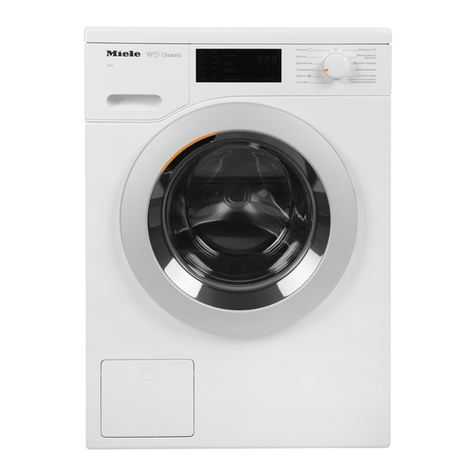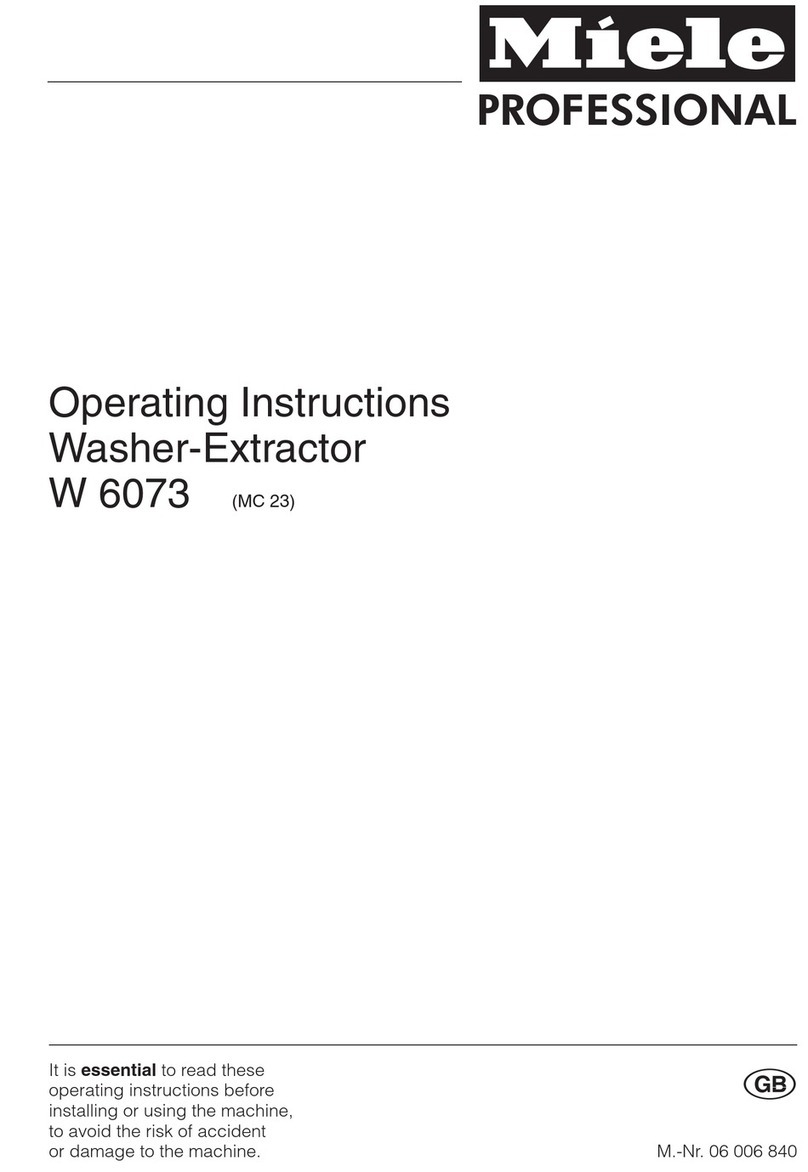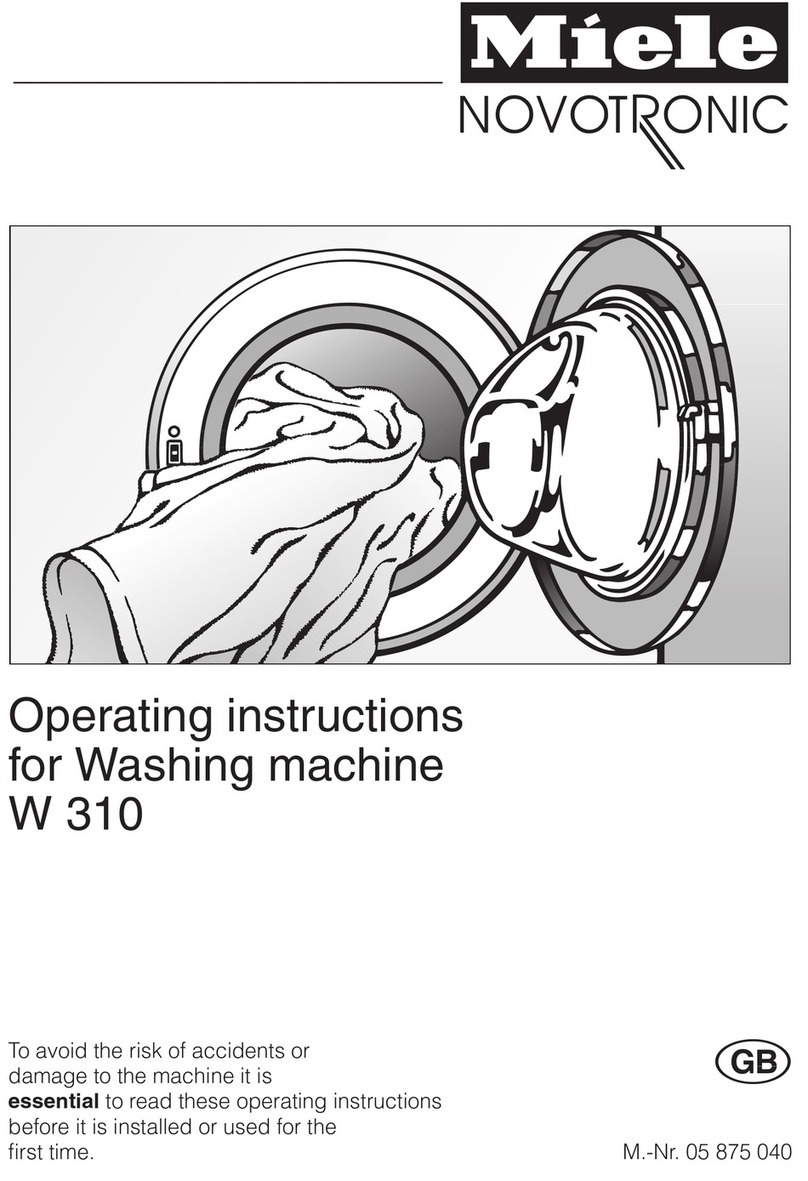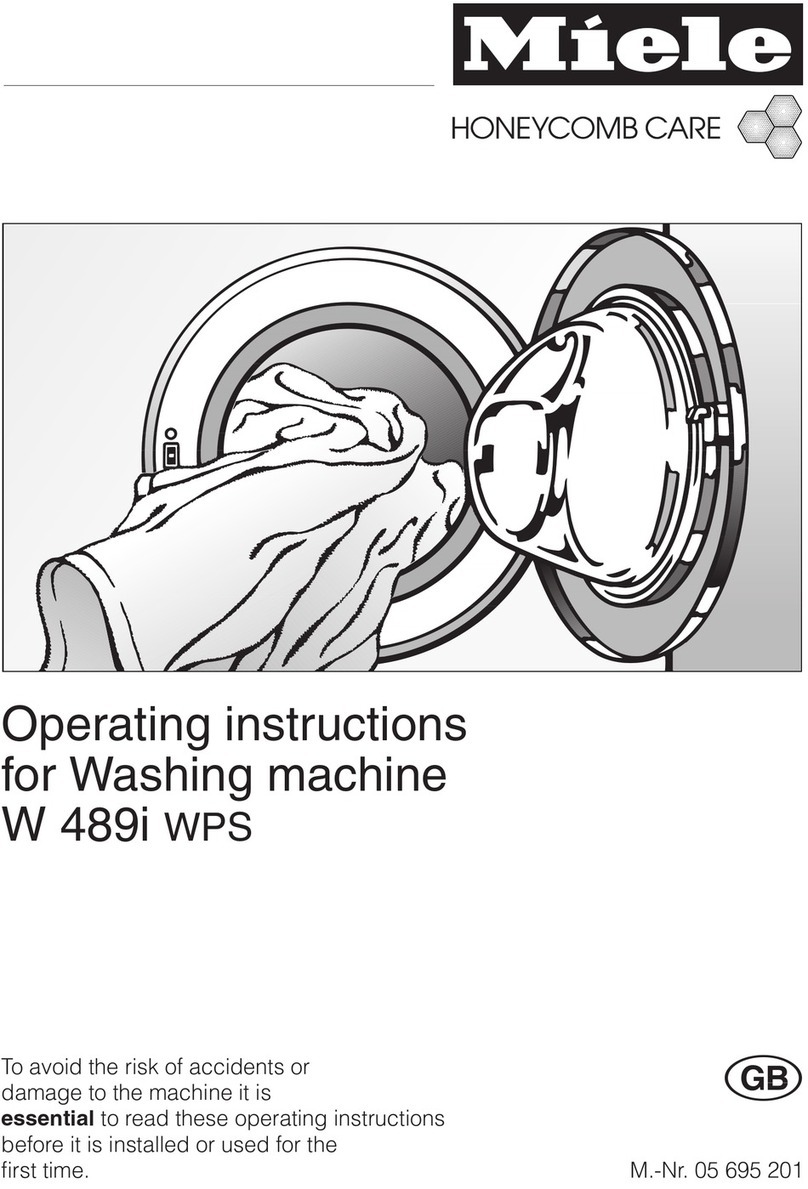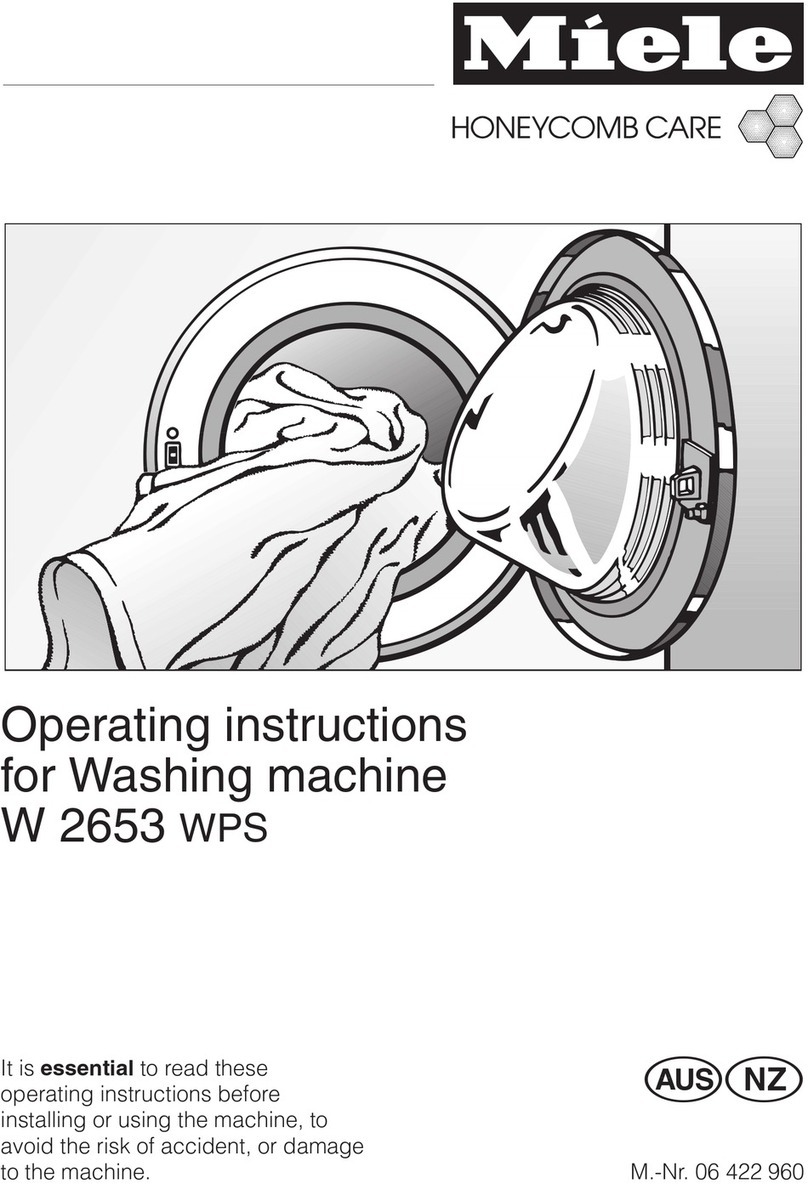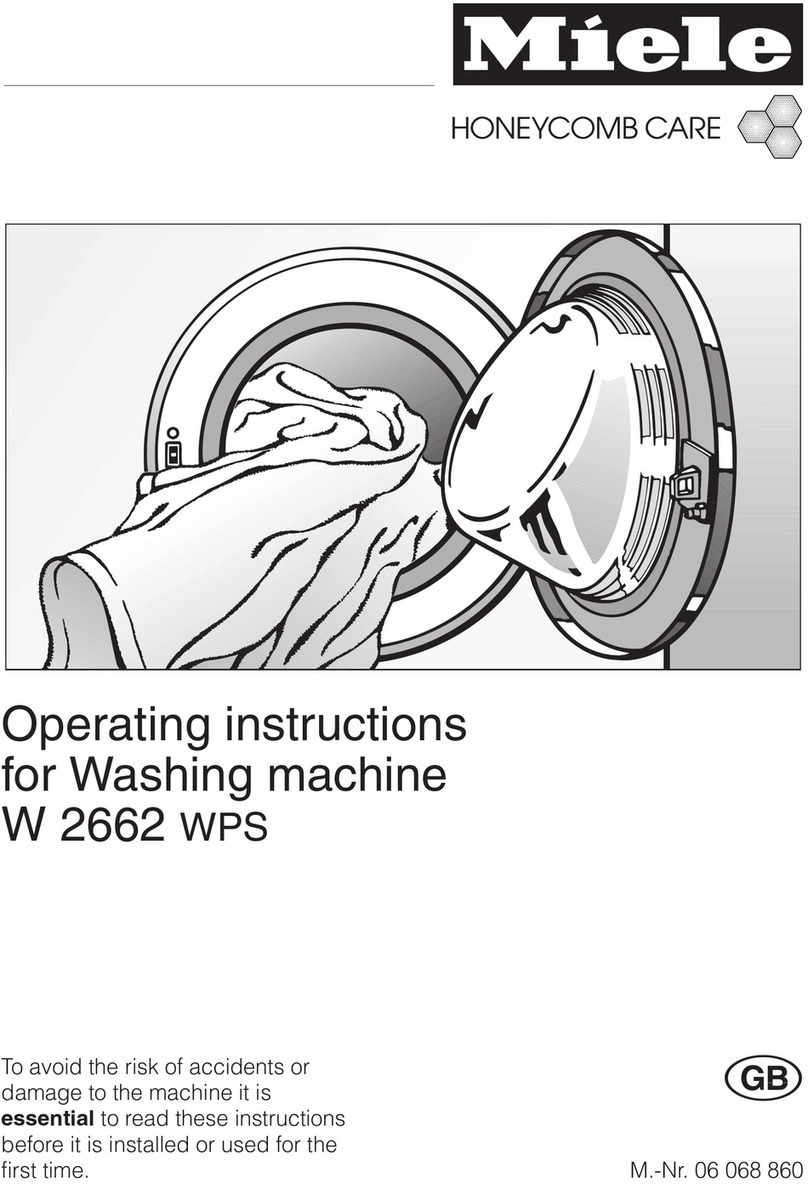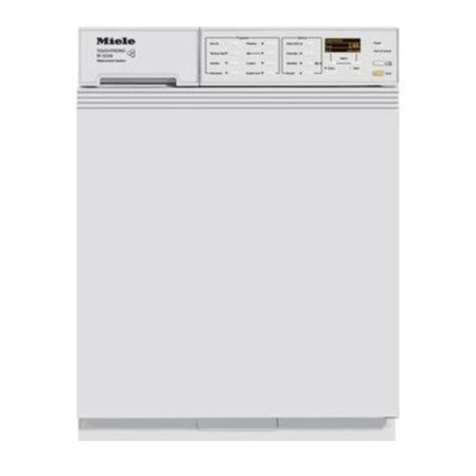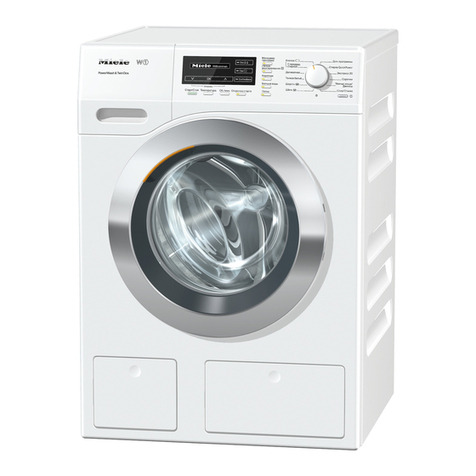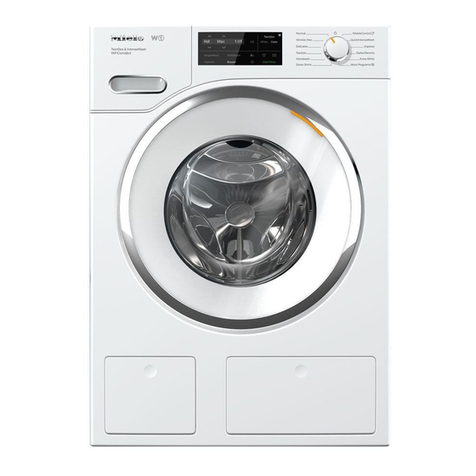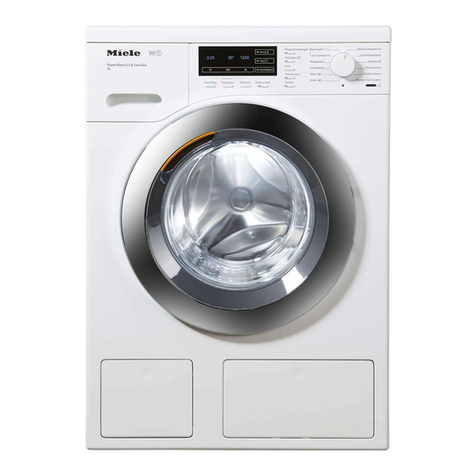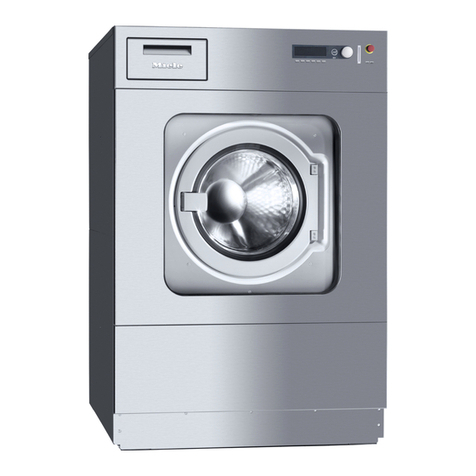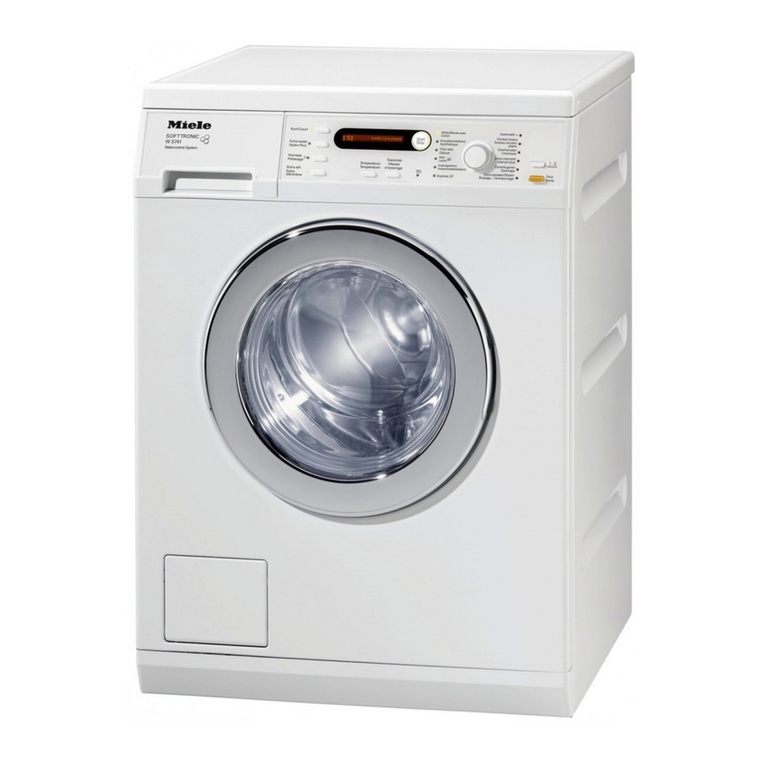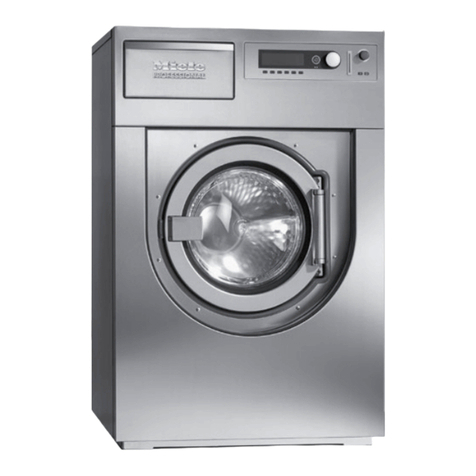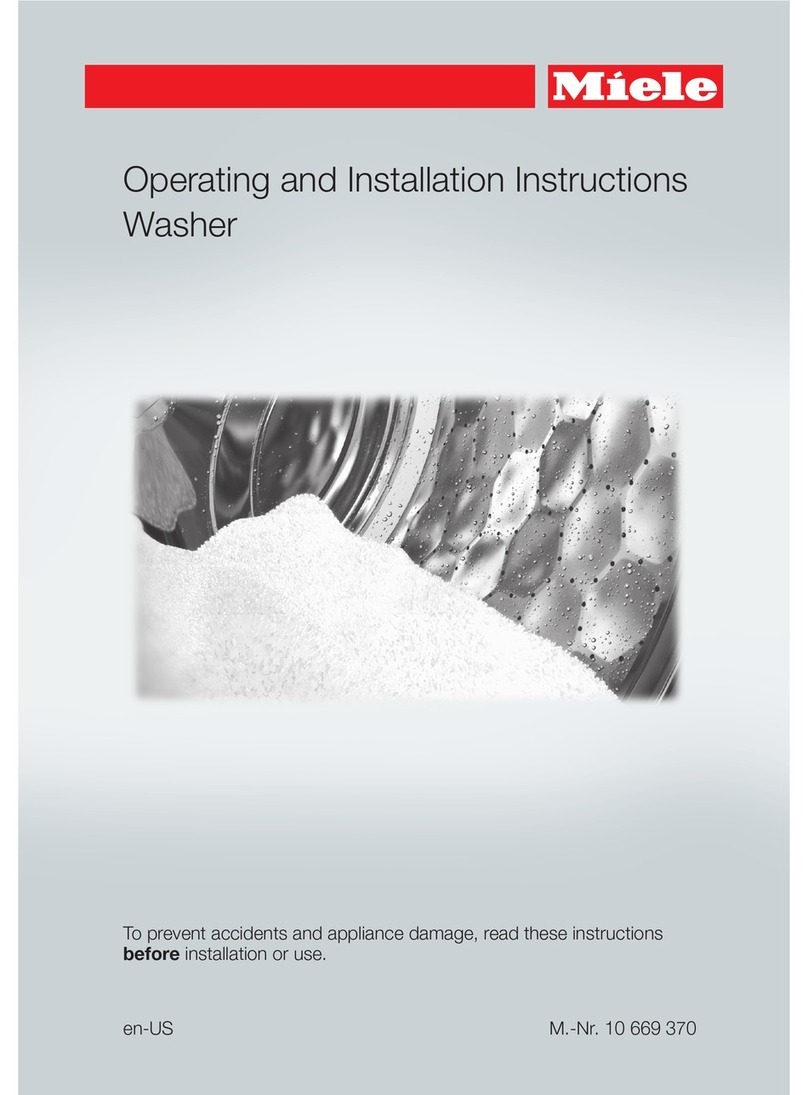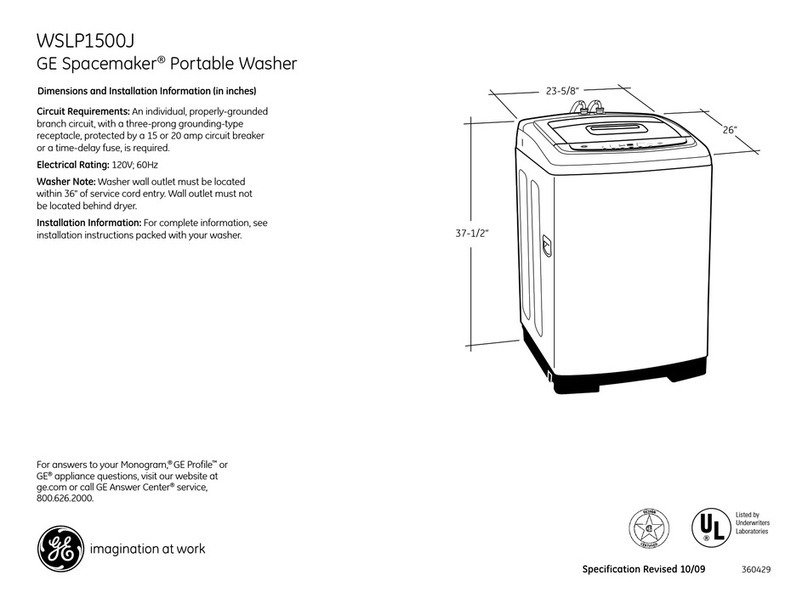~Avoid inhaling powder products.
They can cause burning in the mouth
and throat if swallowed, and can inhibit
breathing.
~Before servicing, disconnect the
power supply by either removing the
fuse, unplugging the unit or manually
"tripping" the circuit breaker.
~After work is conducted on the tap
water network, the water supply line to
the lab washer must be cleared of air.
Failure to do so can result in damage to
the laboratory glassware washer.
The following points should be
observed to assist in maintaining
quality standards for critical labware
and to avoid damage to the loads
being cleaned.
~For this type of cleaning, the
program must not be interrupted until
completion. Interruptions should also
be avoided for all other programs, such
as during performance testing,
because this can negatively affect the
cleaning and rinsing results. After any
interruption, the program should be
restarted from the beginning.
~Only use cleaning agents
formulated for special processes and
approved by Miele for use with this lab
washer. Use of unsuitable cleaning
agents could adversely affect the
components of the machine.
~Use only Miele approved cleaning
agents with this machine. Use of
unsuitable cleaning agents could
adversely affect the components of the
machine. Damages resulting from using
unsuitable cleaning agents are not
covered by the warranty.
~Pre-treatments with cleaning agents
can create suds, as can certain rinsing
agents. For pre-treatment and / or
cleaning, only use low-sudsing
detergents which have been approved
by Miele. Suds can have an adverse
effect on the cleaning process.
~Use of a chemical disinfectant at
moderate temperatures (for example
149°F / 65°C or lower) do NOT fulfill the
official requirements for disinfection
pursuant to FDA regulations. Always
note their specifications for handling,
application conditions and efficacy. The
operator is responsible for the use of
any such thermo-chemical processes.
~The process must be set so that no
foam escapes the wash compartment.
Escaping foam jeopardizes the safe
operation of the lab washer.
~The process must be checked
regularly in order to detect any
foaming.
~In order to prevent damage to the
lab washer and any accessories
through processing chemicals or dirt as
well as any interaction between them,
see "Effects of Processing Chemicals".
IMPORTANT SAFETY INSTRUCTIONS
6


